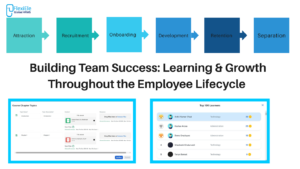
In today’s rapidly evolving business landscape, investing in employees is not just a perk – it’s a necessity. A well-trained and engaged workforce is the engine that drives innovation, productivity, and ultimately, success. But simply offering sporadic training sessions isn’t enough. To truly maximize the return on investment, organizations need to strategically integrate training throughout the entire employee lifecycle.
This blog post will delve into the crucial role of training at each stage of the employee lifecycle, exploring the various approaches and best practices that can help you cultivate a highly skilled, motivated, and loyal workforce.
Understanding the Employee Lifecycle
The employee lifecycle is the structured journey of an employee’s experience within a company; from the moment they first hear about the job to their departure. This journey typically includes several stages:
- Attraction,
- Recruitment,
- Onboarding,
- Development,
- Retention
- Separation.
Each of these stages plays a crucial role in shaping the employee’s relationship with the organization.
Pre-Employment Training
Preparing Candidates Through Assessment and Workshops
Before candidates even step into their roles, it’s beneficial to provide pre-employment training through assessments and workshops. This approach can help filter candidates who align with the company’s values and skills. For example, assessing candidates on soft skills through interactive workshops can give them a taste of the company culture while also allowing the organization to gauge potential fit.
Enhancing Skills Relevant to Job Roles
Pre-employment training can focus on enhancing specific skills that are crucial for the position. For instance, if you’re hiring for a sales position, providing candidates with training related to sales techniques can give them an edge over their peers and boost their confidence.
Communicating Company Culture and Values
Communicating company culture and values is essential before hiring. Training programs that showcase what the organization stands for not only attract candidates who fit well but also set the tone for their expectations. Candidates who understand the culture will likely feel a stronger connection to the company right from the start.
Onboarding and Orientation
Structuring Effective Onboarding Programs
Effective onboarding is more than just paperwork. It should be a structured program that introduces new hires to the organization’s culture, policies, and key personnel. A well-designed onboarding program helps employees feel welcomed and reduces anxiety about starting a new job.
Training on Company Policies and Procedures
New employees should receive thorough training on company policies and procedures. This ensures they understand the expectations and guidelines they must follow. Clear communication here helps avoid confusion and sets the foundation for compliance.
Building Relationships with Team Members
Onboarding should also emphasize relationship-building among team members. Facilitating introductions and team-building exercises helps new hires feel connected, making it easier for them to integrate into the team. When employees have strong relationships, collaboration and communication improve dramatically.
Continuous Learning and Development
Identifying Skill Gaps and Opportunities
Continuous learning is essential for both employee and organizational growth. Regularly assessing employee skills can help identify gaps and opportunities for training.
Implementing Various Learning Modalities
Different employees have different learning preferences. Some may prefer online courses, while others thrive in face-to-face interactions. Implementing a variety of learning modalities, such as online modules and in-person workshops, accommodates diverse learning styles and makes training more engaging.
Encouraging Professional Growth Through Feedback and Evaluations
Regular feedback and evaluations are crucial for professional growth. When employees receive constructive feedback, they’re more likely to engage with training programs aimed at improvement.
Transitioning Employees Through Changes
Training for Role Changes and Promotions
When employees transition into new roles or receive promotions, tailored training is vital. This can include mentoring from experienced colleagues or targeted skill development workshops that prepare them for their new responsibilities.
Skills Development in Times of Organizational Change
Organizations frequently undergo changes, such as restructuring or new technology implementations. Providing training during these times can ease employee anxiety and equip them with the necessary skills to adapt successfully. Employees who receive support during transitions are more likely to remain engaged and committed.
Retaining Talent Through Supportive Development Programs
Talent retention is often a challenge in today’s competitive job market. Organizations that prioritize supportive development programs show employees that their growth matters. This can be realized through ongoing training, mentorship, and opportunities for advancement, leading to a loyal workforce eager to contribute.
FlexiEle Global HRMS: Your Secret Weapon for Training Success!
And speaking of amazing tools, let’s talk about FlexiEle Global HRMS and its incredible Learning Management System (LMS)! This isn’t just any LMS; it’s your all-in-one solution for managing and delivering effective training programs throughout the employee lifecycle.
Here’s why FlexiEle is a game-changer:
- Course Management: Upload multiple file types (videos, documents, quizzes) effortlessly. Goodbye, frustrating upload issues!
- Gamification: Badges, certificates, and elaborate dashboards to keep learners engaged and motivated! Learning becomes a game!
- Mobile Learning: Access courses and assessments on the go with the FlexiEle mobile app. Learning anytime, anywhere!
- Blended Learning: Seamlessly integrates online and in-person learning modalities. The best of both worlds!
- Reporting and Analytics: Track progress, identify areas for improvement, and measure the impact of your training programs. Data-driven insights!
- Employee-Specific Training Hours: Monitor completed training hours to ensure compliance and track employee development.
- Effortless Upload: The admin can upload various format of file at one go without any problem.
Key Features that Seal the Deal:
- Effortless Upload: No more struggling with file formats! Upload anything you need in one go!
- Certification Integration: Watch training translates directly into performance! Certificates are linked to your performance management system for real-time tracking.
- User Addition: Onboarding just got a whole lot easier! Add multiple users at once and automate notifications.
- Employee Tracking: Keep tabs on employee progress and engagement with ease.
- Induction Course: Set new hires up for success from day one with a readily available induction course.
Conclusion
Training is essential at every stage of the employee lifecycle, from pre-employment through to transition and beyond. By investing in comprehensive training strategies, organizations can foster employee growth, enhance engagement, and ultimately achieve greater success. The journey of professional development is ongoing, and a commitment to training and education will pay off in a thriving, motivated workforce. So, let’s prioritize training and make our workplace better, one employee at a time!

